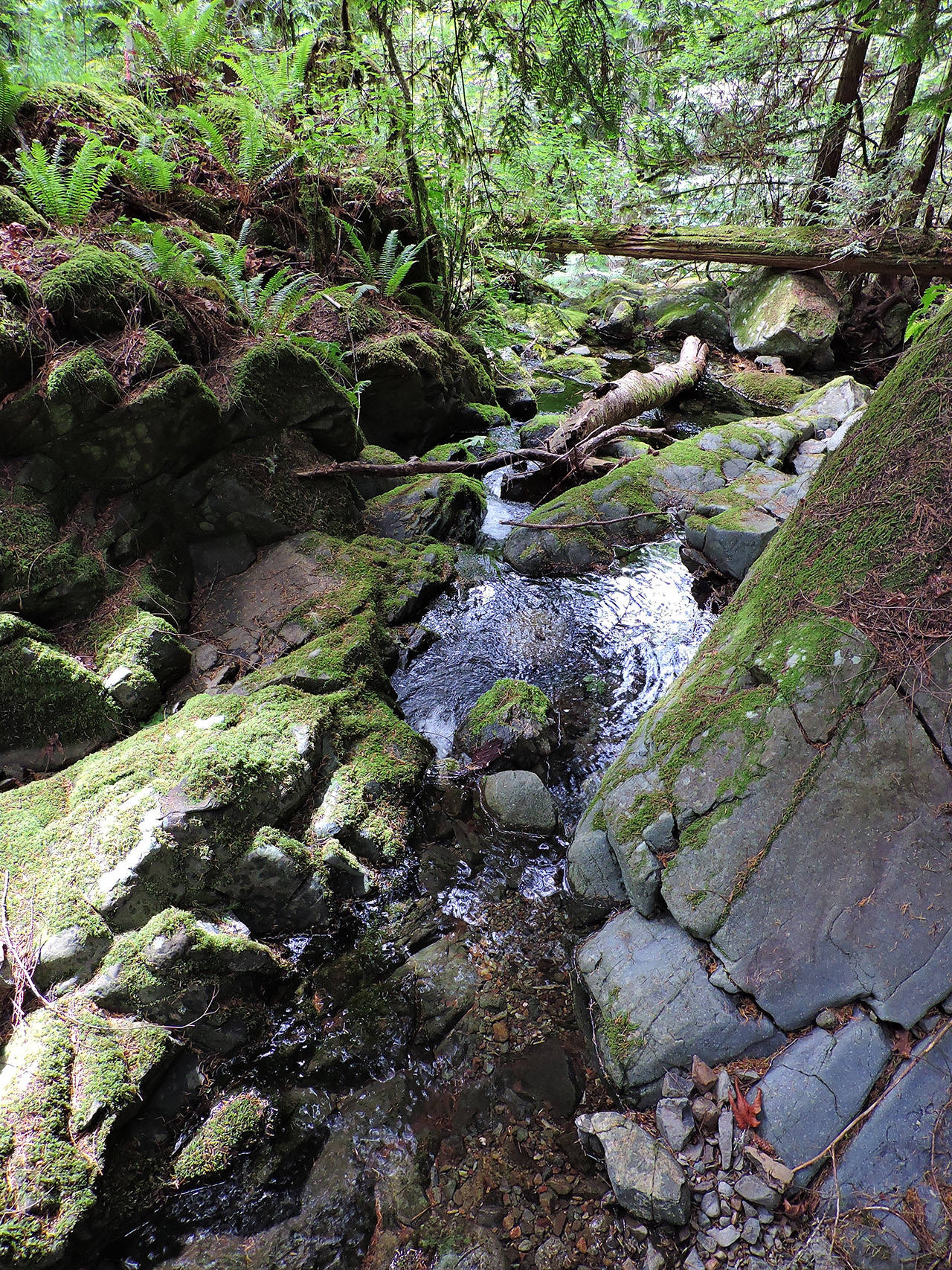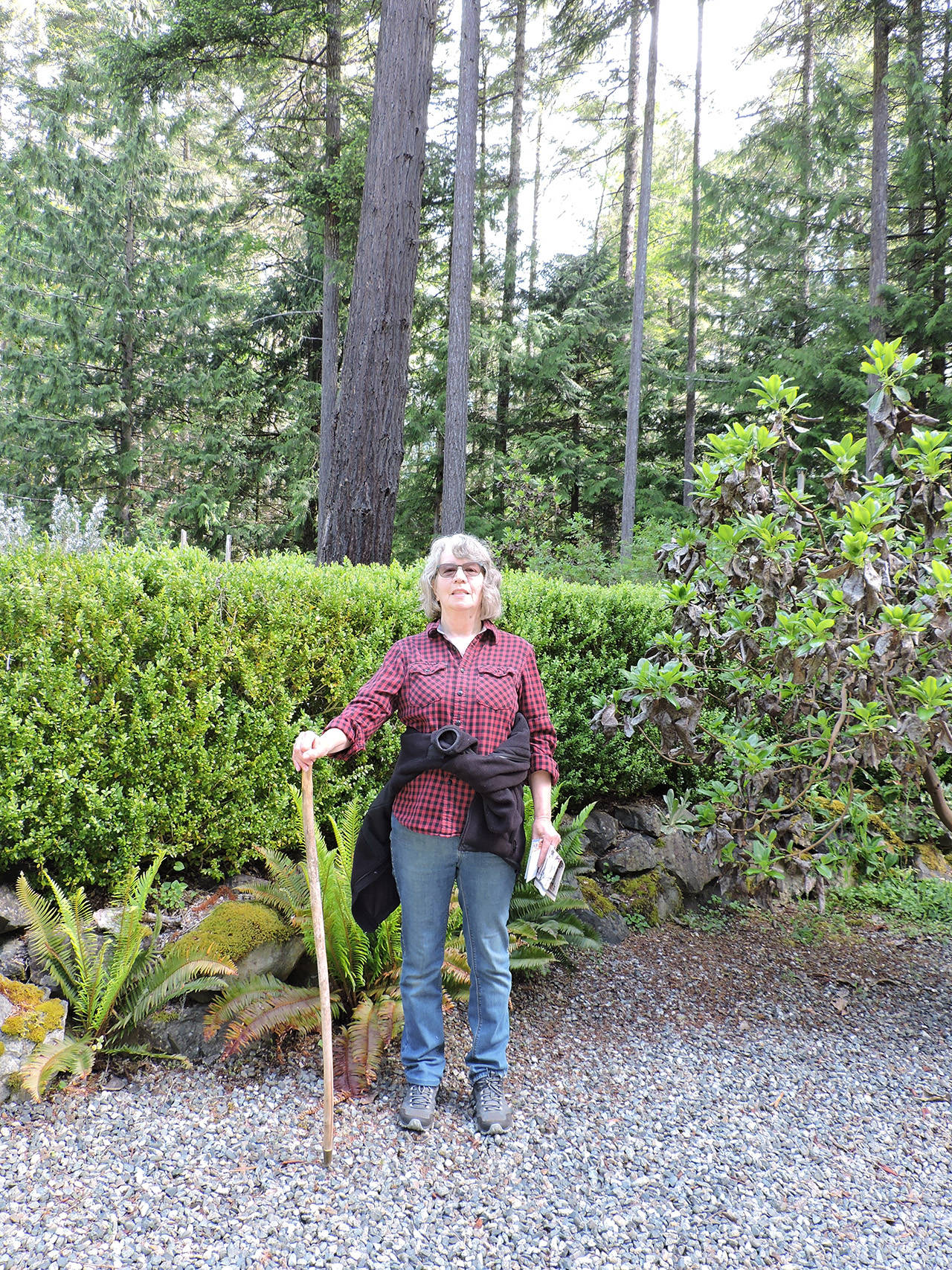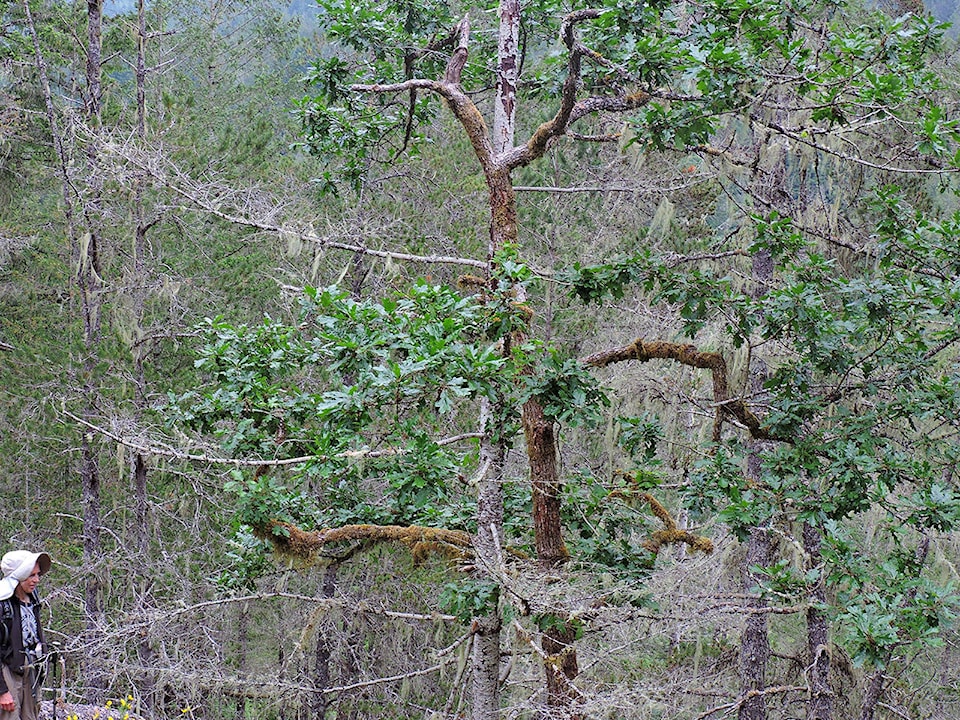Dawn Gibson
Sooke News Mirror
When walking through the Homer-McCrea Covenant land, it isn’t hard to see why one might want to protect it, but there is far more importance to the land than meets the eye.
Alanah Nasadyk, community and development coordinator at Habitat Acquisition Trust (HAT), said the land is home to vast amounts of wildlife and natural ecosystems.
“It contributes to the overall protection of natural areas in Sooke and wildlife can pass through that place as they head to Sooke Potholes or into the Sooke Hills wilderness they have a little bit more of habitat that they can feel protected in,” said Nasadyk. “So instead of a bear wandering through someone’s yard they can happily wander through the Homer-McCrea Covenant and be safe.”
Patti Homer, owner of the covenant area, said the land is important to her because it is home to her and her family, and she plans for it to be passed down from generation to generation.
“It’s an absolutely beautiful piece of land. There aren’t a lot of natural areas left in Sooke so I wanted to protect it,” said Homer.
HAT has been working with “citizen scientist” volunteers and biologists to find out more about the species that can be found throughout the natural area. They are also working to remove any invasive species coming in to the covenant in order for the natural ecosystems to thrive.
“One of the most special things about the Homer-McCrea land is the biodiversity there,” said Nasadyk. “If you go walk through that area you’ll see huge Douglas-firs, and not only that but there’s a beautiful glistening creek that winds its way along. And in the further regions of the area, you can come across rocky outcrops and all kinds of wildflowers and even lichens that can take years to grow.”
Homer explained that bears, cougars, elk, and wildlife of all different sizes pass through the area regularly, often heading towards the Sooke River.
“If one were to set up cameras in that area, I think they would be amazed at the amount of wildlife they would see. They might even get to see some wolves,” said Nasadyk.
Another very special part about the land is the two Garry oaks found on the property, which are located the furthest west of their kind in the Greater Victoria area.
Nasadyk said the First Nations people would often intentionally set fires to keep open meadows. People believe this was because it was easier to hunt deer and other species in an open meadow, rather than a Douglas Fir forest which is dense and has big trees and shrubs in the way.
Even if a Garry oak is burned down to a small portion, it can grow back because of it’s underground root system. Garry oaks would flourish in these burned areas because they were not being shaded and taken over by the Douglas-fir.
As colonial settlement happened, fire became more and more suppressed and areas that were flat and open like Garry oak meadows were ideal for development because it was already open, you didn’t have to cut down Douglas-fir forests.
Today we tackle forest fires right away, so over time as less intentional or natural forest fires occurred, Douglas-firs began to grow back and surround the Garry oaks. This could be why there are only two left on the land.
“At this point they are just surviving on the covenant land when they used to be thriving,” said Nasadyk.
HAT is pairing up with a student from the University of Victoria to research more about the Homer-McCrea Covenant, in order restore and preserve the natural ecosystems found in the area.
The covenant is currently only funded by donations from the public. To learn more or to donate to the Homer-McCrea land visit hat.bc.ca.





